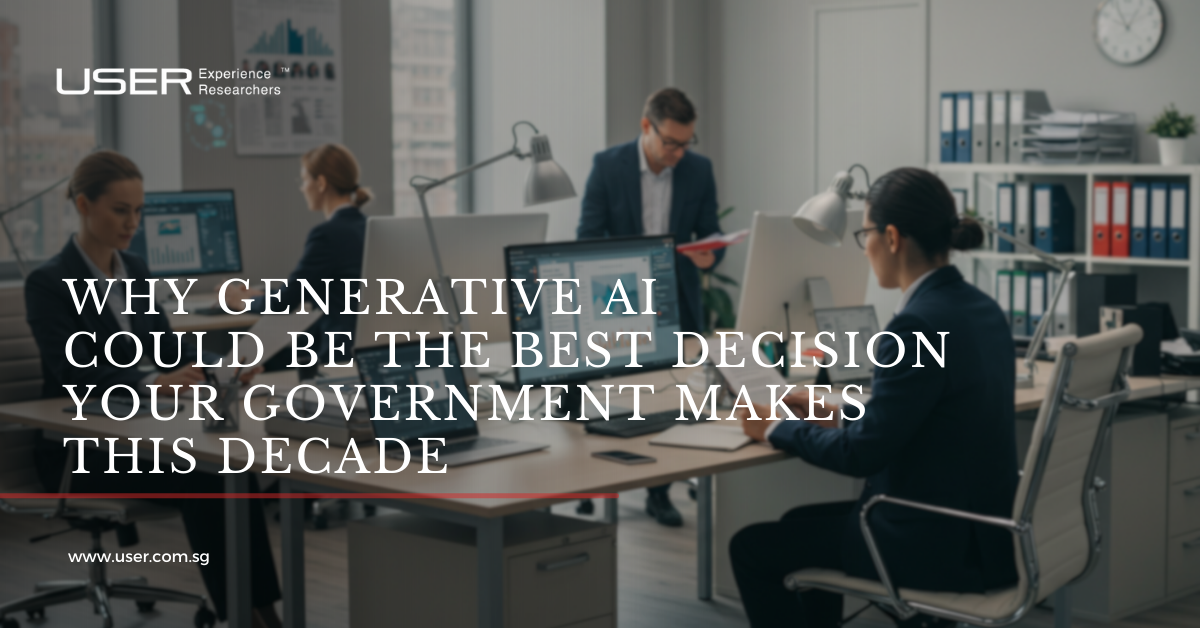
Generative AI truly stormed the internet in late 2022, sparked by ChatGPT’s release and the rapid rise of AI systems capable of generating remarkably human-like text, images, and even video. Suddenly, what was once experimental became everyday magic, from drafting memos and reports to creating artwork and summarising complex research. Its success lies in its utility: saving time, boosting creativity, and generating insights quickly.
Today, generative AI is widely adopted across industries, and perhaps nowhere is its potential more compelling than in government. Across departments, from health to defence, it is reshaping how governments serve citizens and support their own teams.
Use Cases of Generative AI in Government
Generative AI offers a range of practical applications in the public sector:
1. Virtual assistants and chatbots
These tools, which respond to citizen queries about taxes, benefits, or services, can dramatically reduce wait times and lighten staff workloads. For example, the Social Security Administration’s virtual agent now manages over 2 million interactions annually, resolving common queries without human intervention.
2. Document and report drafting
Agencies like the FDA are already using AI to summarise adverse event reports, generate protocols, and speed up scientific reviews via tools like “Elsa”.
3. Improved internal communication
Generative AI enhances written communications, supports information retrieval and strengthens program tracking, improving efficiency in mission-support tasks.
4. Tax fraud detection and data analysis
AI systems sift through complex financial records to flag tax evasion and patterns of fraud more efficiently than manual audits.
The adoption of AI in government is accelerating. The number of generative AI use cases across federal agencies increased ninefold between 2023 and 2024.

Challenges and Mitigations
Naturally, challenges must be addressed:
- Policy and regulation: Existing rules may not fully cover generative AI usage or data privacy. Agencies must update policies and ensure compliance.
- Security and bias: Sensitive data demands secure handling, and AI bias must be monitored. Building robust evaluation frameworks is essential.
- Workforce readiness: Staff need training in AI tools and governance. Investing in knowledge and oversight mitigates misuse.
Why invest now? The rapid adoption of GenAI in public services signals a critical turning point. Those who delay risk falling behind in efficiency, service quality, and citizen trust.
Real Improvements in Government Workflow
Real-world trials prove the measurable benefits of adopting GenAI in government operations.
A large-scale trial across the UK Civil Service found that AI tools like Microsoft 365 Copilot saved the equivalent of 1,130 full-time employees’ workload each year. This translated into freeing up almost 30,000 civil servants across Whitehall to focus on higher-value work rather than repetitive administrative tasks. The AI assisted in drafting policy documents, summarising lengthy email chains, producing meeting briefs, and updating departmental records.
Similar improvements have been observed in the United States, where AI-enabled systems helped agencies produce citizen reports faster, streamline case processing, and consolidate datasets for policy-making. These results suggest that AI not only increases productivity but also allows employees to dedicate more time to strategic, problem-solving tasks instead of manual data entry or procedural writing.
Integrating generative AI benefits not just government staff and workflows, but creates a ripple effect that transforms the quality and timeliness of services provided to citizens.

Benefits for Citizens and the Future of Public Service
For citizens, the integration of generative AI into government systems can be transformative.
Faster and clearer communication: AI-powered virtual assistants can provide instant, accurate answers to service-related questions without the delays often associated with traditional processes.
Personalised and inclusive services: Generative AI can adapt content for different languages, reading levels, and accessibility needs, ensuring that no group is left behind.
Greater transparency and trust: By helping to produce clearer public documents, timely updates, and accurate information, AI can strengthen the relationship between citizens and the state.
This shift points to a future where government services are not just functional but anticipatory, proactively identifying citizen needs and responding before problems escalate. In such a landscape, innovation and technology will no longer be optional extras. They will be central to how the public sector operates and earns trust.
Conclusion
Generative AI delivers speed, scale, and efficiency, but its most profound impact lies in reshaping government operations and citizen engagement. We have seen how it enables practical applications from document drafting to fraud detection, how trials have shown massive time savings and improved workflows, and how citizens ultimately benefit from faster, more transparent, and inclusive services.
User Experience Researchers (USER) is Asia’s leading experience and solutions consultancy. We help organisations amplify productivity through human-centred technology, including GenAI-powered automation. By embedding generative AI thoughtfully, USER enhances operations, supports staff, and improves public-facing services without sacrificing compliance or trust.
Generative AI is not a future vision. It is a present-day advantage. Let USER help you harness it effectively. Visit www.user.com.sg or email project@user.com.sg to begin your AI transformation journey.


